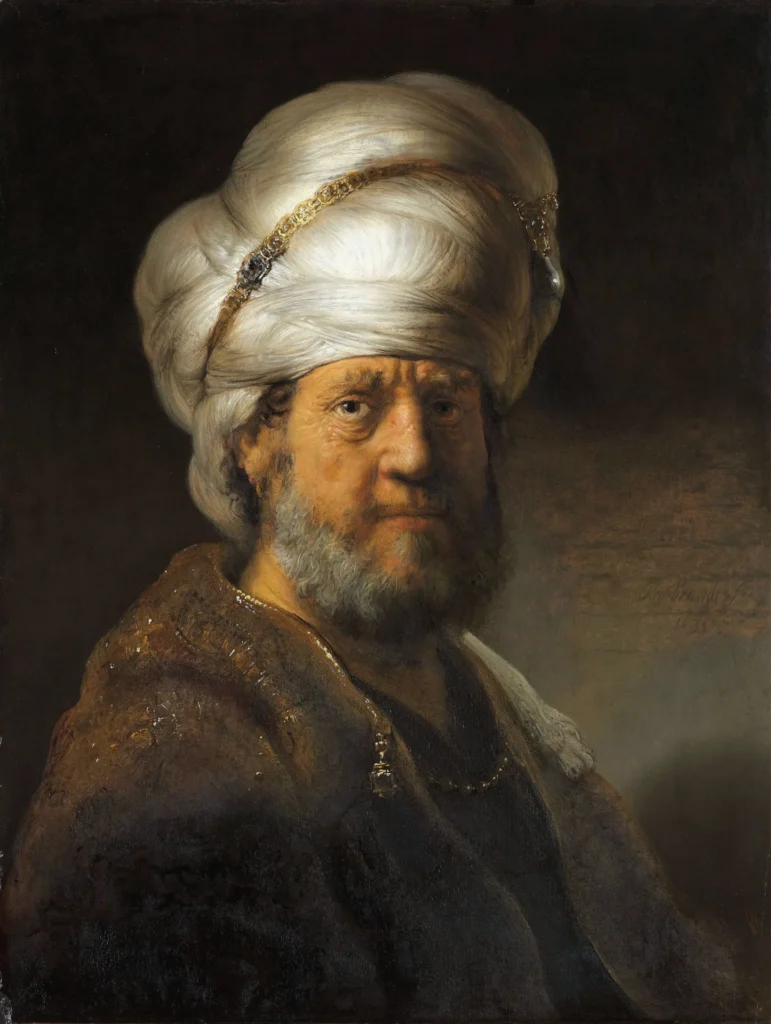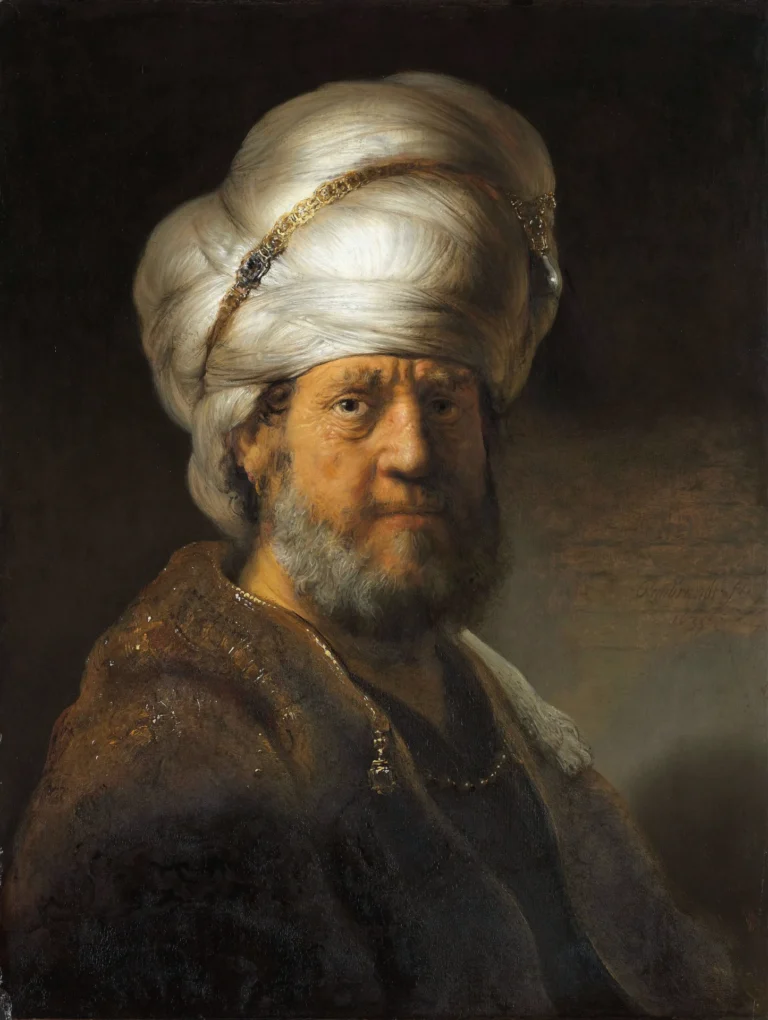Man in Oriental Costume
Rembrandt van Rijn's works featuring men in Oriental attire are a testament to his fascination with biblical and exotic themes. Two notable pieces are 'Self-Portrait in Oriental Attire' (1631), showcasing Rembrandt himself in elaborate clothing, and 'Man in Oriental Costume' (1632), depicting a bejeweled figure in a turban. These works exemplify Rembrandt's mastery in portraying light and texture, enriching the visual narrative with authenticity and cultural depth.
1631, 1632
About the Artwork
Did You Know
Liked what you see? Add it to your collection.
Enjoyed reading? Share it.
... continued
Self-Portrait in Oriental Attire
This painting, dated 1631, is a self-portrait of Rembrandt in Oriental attire, currently housed at the Petit Palais in Paris. It is notable for being the only full-length self-portrait of Rembrandt. The painting shows Rembrandt standing in a fanciful Oriental costume, including a turban with a feathered aigrette, a velvet cloak, and a short silk tunic. Initially, the painting depicted Rembrandt with longer legs, but he later shortened and eventually hid them behind a dog, which was added around 1633.Man in Oriental Costume
There are several works by Rembrandt that feature men in Oriental costume, often used to evoke biblical or exotic themes.
One such painting, "Man in Oriental Costume," dated around 1632, is housed at the Metropolitan Museum of Art. This work depicts a bearded man in elaborate, bejeweled attire, including a turban and a fur-lined cape. The figure is strongly modeled by light and is characterized by its detailed rendering of textures and materials.
Another version, possibly depicting the Old Testament patriarch Dan, is part of The Leiden Collection. This painting is a copy of Rembrandt's original, made by a member of his workshop, likely Ferdinand Bol. It features a similar composition and style to Rembrandt's original, with the figure standing before a stone wall and a dark curtain, wearing a white turban and a fur-trimmed cloak.










